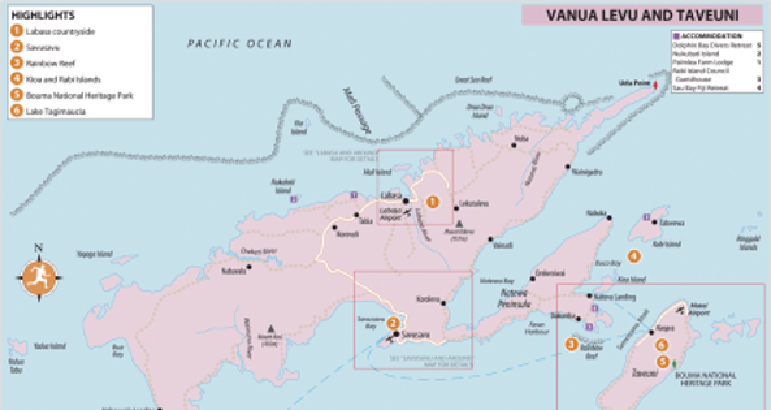Travel Reference
In-Depth Information
The northern islands of Vanua Levu and Taveuni are Fiji's forgotten frontier. Once
the centre of European exploration and the ensuing copra (coconut oil) trade, they are
far removed from mainstream tourism and offer a great opportunity for adventure
travel. Vanua Levu, Fiji's second-largest island at 5587 square kilometres, is dominated
by rambling countryside and has just two towns, Labasa and Savusavu. Labasa has a
hilly rural hinterland worth exploring by bus while the serene yachting anchorage of
Savusavu boasts quaint drinking holes and restaurants as well as plenty of nearby hikes
and snorkelling beaches. Off Vanua Levu's southeast coast is the rugged, forest-covered
Taveuni, the third-largest island in Fiji, yet not even a tenth the size of its neighbour.
Dubbed the “Garden Island”, Taveuni is dominated by the stunning Bouma National
Heritage Park, a magnet for hikers and bird-watching enthusiasts.
Between the two islands is one of the world's best
dive sites
, the Rainbow Reef, while off
Vanua Levu's north shore is the
Great Sea Reef
, the world's third-largest coral reef system,
covering over two hundred thousand square kilometres.
Vanua Levu and Taveuni are often dubbed “The Friendly North” owing to the hospitality of
the region's people, although the reality of life here is not quite so sweet. Battered by
hur-
ricanes
and flooding in recent years and hit by the falling prices of both sugar and copra,
the islands offer few opportunities for the younger generation, many of whom have moved
to Viti Levu in search of work.
Tourism
is the region's greatest hope, although it is hindered
by the lack of infrastructure, particularly sealed roads and long runways capable of handling
jets. A real-estate boom around Savusavu has given some local land-owning Fijians hope of
riches, but most profits from developments tend to end up abroad.

